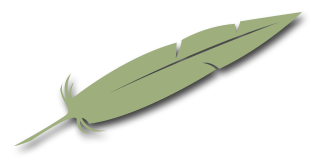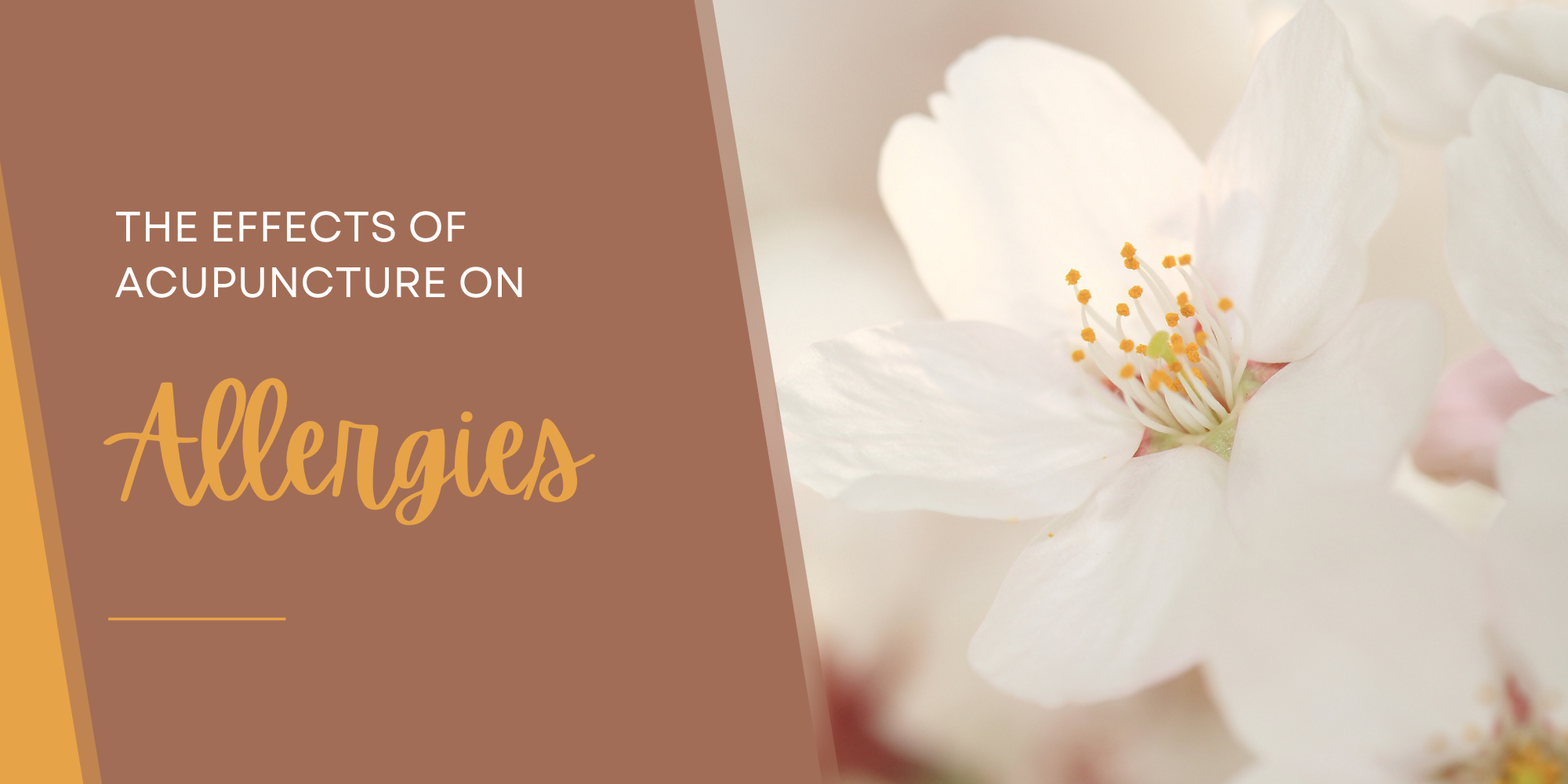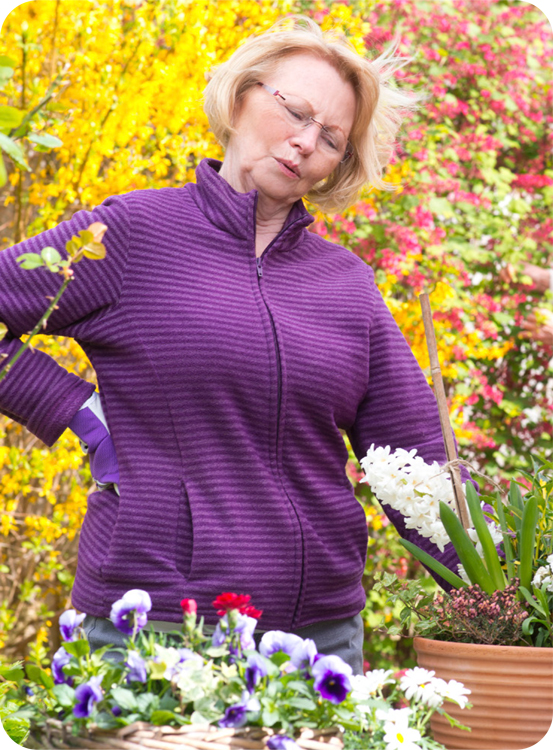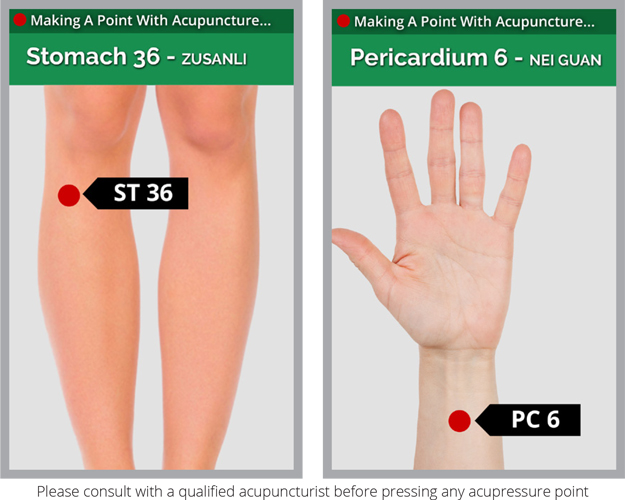- WE MOVED !!!
-
 Professional Acupuncture & Physical Therapy1118 East Superior Street
Professional Acupuncture & Physical Therapy1118 East Superior Street
Duluth, MN 55802(218) 724-3400 Clinic Hours
Mon8:00 am - 4:30 pmTue1:45 pm - 4:30 pmWed8:00 am - 4:30 pmThu8:00 am - 4:30 pmFriCLOSED

- Long Covid Booklet
Acupuncture
Research Update | The Effects of Acupuncture on Allergies

Millions of people (as many as 50 million per year) suffer from recurring allergy symptoms. The causes of allergies are as many as the people who suffer from them. The severity of an individual’s reaction to a given allergy can vary greatly from one person to another and one allergic event to the next. Allergies range in severity from minor to mild, to irritating to severe, and some allergies can even be deadly.
The most common, most problematic allergic sensitivity is Hay Fever or allergic rhinitis. Many people miss work and other important activities on a seasonal basis when severe Hay Fever symptoms are not controlled.
For these reasons, many people seek relief from allergies, and fortunately there are many healthcare options available for those who are looking for better ways to treat their allergies. One of the most promising, and often overlooked treatments can be acupuncture and acupressure.
The Effect of Acupuncture on Allergies
While medication can reduce inflammation and suppress other symptoms of allergies, medications almost always come with undesirable side effects. Few medications can resolve the underlying problem that makes a given person allergic to a given substance. Conversely, acupuncture has been used for a number of years now by a wide range of practitioners to successfully relieve allergy symptoms.
Acupuncture is an ancient practice developed in mainland China. It has been used for a wide variety of conditions. Since becoming popular in the West, it has been frequently used as a complement to western medicinal options.. Acupuncture helps to correct functional imbalances and restore the flow of your body’s innate energies, thus returning you to a more natural state of well-being. And hopefully allergy-free!
Acupuncture, and Its Effect on Allergic Rhinitis
This study took aim at the most troublesome of all allergies, allergic rhinitis. It corroborates the reports by patients and practitioners that acupuncture is an effective way to treat allergies.
The study looked at 422 patients who tested positive for pollen allergies and presented with allergic nasal symptoms. The researchers randomly assigned participants to three different groups. One group was given 12 acupuncture treatments and took antihistamines as they normally would. The next group took 12 sham acupuncture treatments and antihistamines as they would normally do to combat symptoms. The third group took only antihistamines with no acupuncture treatments.
The research team found that those who received both real acupuncture and antihistamines reported the largest decrease in symptoms. They also reported using antihistamines less frequently than the other two groups.
While this study was limited to one allergy, it is promising that other, if not all chronic allergies, can be successfully treated through the regular use of acupuncture and/or acupressure.
If you or someone you know suffers from allergies, give us a call at (218) 724-3400, maybe acupuncture can help.
Source
Benefits of Acupuncture for Allergies

A runny nose, sneezing, itching and watery-eyes…also known as symptoms of allergies. Seasonal allergies can really be a pain. It is estimated that nearly 50 million Americans suffer from seasonal allergies every year. And, the amount of money being spent on over-the-counter allergy medications is over $18 billion.
But, what if there was a way to combat seasonal allergies without the side effects of medications and to actually get to the root of the problem instead of just masking the symptoms? Well, there is a way to do this, and it’s called acupuncture.
Acupuncture and traditional Chinese medicine offer a permanent solution to seasonal allergies with an all-natural approach that will ultimately save you money. Since traditional Chinese medicine (TCM) attacks allergies in a much different method than Western medicine, there is a good chance your allergies will cease to be a problem. Western medicine knows how allergies work and what happens to the body, but there is still no explanation as to why. TCM doesn’t need to know why because TCM looks at the body as a whole and uses an elemental system to determine where there are excesses and deficiencies in each person. So the TCM treatments are completely customized to each patient, thus making them much more effective than over-the-counter medications.
When using TCM to treat allergies, practitioners focus heavily on something called Wei Qi. Wei Qi is similar to the immune system in Western medicine. Wei Qi protects the body against foreign materials that can lead to inflammation and eventually allergies. People with lower immunity/Wei Qi are more susceptible to allergies and frequent colds. Acupuncture helps to boost the Wei Qi making it more difficult for allergens to attack the body.
Acupuncture by itself will make a difference in fighting allergies, but adding herbs and herbal formulas will provide the final punch to help eliminate allergies for good. Because each patient has different causes for their allergies, adding herbal formulas can greatly increase the efficacy of the acupuncture treatments by extending the effect of the needles. For example, if a patient specifically gets itchy, or watery eyes when their allergies flare up, then the practitioner would likely want to draw the excess energy/element down. In this particular case, the patient would have an excess of fire creating wind. The practitioner would use acupuncture points known to decrease fire and wind in the body. Then also adding herbs that do the same thing, would create a one-two punch type of treatment that has longer lasting, more permanent effects.
Ultimately what acupuncture does is boost the Wei Qi/immune system while decreasing the inflammatory response in your body that occurs when an allergen is encountered. The other aspect of treatment, as stated earlier, is to look at the patient as a whole versus just the symptoms. A good acupuncturist will also focus on dietary habits that may be contributing to your allergies. Many times a person’s Wei Qi is depleted from within due to the foods they are eating. Things like sugar and dairy are often associated with a lower immune system. Eliminating or drastically reducing these items will allow the body to recover more quickly, making allergy attacks easier to resolve.
A comprehensive plan including acupuncture treatments, herbs and dietary changes will yield the best results when it comes to fighting allergies. Be sure to call us at (218) 724-3400 to schedule an appointment with Heidi and you will be grateful year after year for the relief they provide when it comes to treating allergies.
How Acupuncture Can Help With Arthritis

How acupuncture helps
Acupuncture treats the patient by addressing the whole body. When the body is out of balance, pain and illness can arise. Acupuncture works by returning the body back to its natural balance and energy flow to eliminate pain and to improve overall health.
There are more than 2,000 acupuncture points on the body. When these specific points are stimulated through small acupuncture needles, it can help relieve pain by improving the body’s nervous system, which can jumpstart the production of pain-reducing endorphins.
Research studies
A study in Germany found that 304,674 people with osteoarthritis experienced less pain and stiffness after 15 sessions of acupuncture. The treatments were done during a three-month period and lasting results were seen for another three months after treatment was stopped. The patients who had the acupuncture treatment reported better quality of life and function than those who had no treatment.
 A study done at the Chronic Pain and Fatigue Research Center at the University of Michigan Medical School found that of 20 women who were diagnosed with fibromyalgia, the half that received acupuncture treatment had increased activity of the pain-reducing receptors in the brain.
A study done at the Chronic Pain and Fatigue Research Center at the University of Michigan Medical School found that of 20 women who were diagnosed with fibromyalgia, the half that received acupuncture treatment had increased activity of the pain-reducing receptors in the brain.
A trial published in the Annals of Internal Medicine studied 570 men and women with osteoarthritis. For the men and women who received 23 acupuncture treatments for about 6 months, results of less pain and better functionality occurred, compared to those with the placebo treatment.
Arthritis can be painful and persistent, resulting in frustration when it isn’t easy to find relief. Acupuncture is a non-invasive, alternative treatment that has been proven in numerous studies to help reduce pain and increase mobility.
Source: Arthritis Foundation
6 Foods to Help Your Arthritis
Fish
Fish are full of omega-3 fatty acids, which work as a natural anti-inflammatory. Some of the best fish to consume include salmon, tuna, mackerel and herring, which are all rich in omega-3s. The recommended weekly amount is around six to eight ounces of fish.
Oil
Healthy oils like extra virgin olive oil, avocado and safflower oils are packed with healthy fats and anti-inflammatory properties.
Broccoli
Because it contains sulforaphane, broccoli has been shown to slow and prevent the progression of osteoarthritis. Broccoli is rich in vitamin K, C and calcium, which is known to help strengthen bones.
Green Tea
Green tea has many health benefits, one including reducing pain of arthritis. The tea is full of antioxidants that work to lower inflammation and the disintegration of cartilage.
Citrus Fruits
Fruits like oranges, limes and grapefruits are very acidic and full of vitamin C. Vitamin C can help aid healthy joints for those with arthritis and work as an anti-inflammatory.
Beans
Beans are beneficial for many reasons. They are a great alternative to meat for protein and are rich in folic acid, magnesium, iron, zinc and potassium. Red beans, kidney beans and pinto beans are known to improve muscle health and the heart and immune system.
Having a natural and well-rounded diet is a part of any healthy lifestyle, but can be especially beneficial for arthritis and chronic pain.
High Blood Pressure
Have you recently been diagnosed with high blood pressure (HBP)?
You’re not alone! According to the CDC, one in three U.S. adults have high blood pressure and only half of those have their condition under control.
Many health factors intertwine to cause HBP including:
- genetics (family history)
- other conditions such as diabetes and kidney disease
- diets too high in sodium and too low in potassium
- a lack of physical activity
- excessive alcohol and caffeine intake
- tobacco use
- chronic stress
- obesity
While many medications exist to help control high blood pressure, they do not always work well and can have adverse side effects. Chronic high blood pressure is often referred to as the ‘silent killer’ as there are often no bothersome symptoms, making it easy to ignore. However, if left untreated HBP significantly increases one’s risk of stroke and heart disease. Fortunately, for people willing to be proactive there are many natural ways to lower blood pressure and mitigate the side effects of medication.
4 Tips for naturally lowering blood pressure
Acceptance
The first step in naturally treating your HBP is to accept it. Denial will keep most people from consistently developing and maintaining lifestyle habits that bring blood pressure into healthy ranges. It’s especially easy to do because often in the initial stages HBP has no obvious symptoms that impair enjoyment of daily life.
Get acupuncture!
 Several recent studies on the effects of acupuncture on hypertension indicate that it can have a significant impact on lowering high blood pressure and managing the side effects of medication (Cevik, 2013). Researchers at University of California at Irvine have been studying the neuroendocrine mechanism underlying the significant clinical effect acupuncture has on the treatment of hypertension for the last 15 years. They have discovered that electroacupuncture (EA) at the points P 5-6, Li11-10, St 36-37 and Ht 6-7 lowered hypertension and that low frequency and low current electroacupuncture (EA) produces significant results. Notably when P 5-6 receives only acupuncture without needle manipulation to stimulate ‘deQi’ sensation there was no effect on hypertension. EA is used to deliver consistent stimulation to the underlying nerves which send impulses to the rVLM part of the brain, a part of the medulla which interacts with the cardiovascular system. EA at low frequency at P 5-6, Li 11-10, St 36-37 and Ht 6-7 causes a release of enkephalin neuropeptides, endorphins, and GABA which has a net effect of lowering high blood pressure. In an eight week study with participants receiving EA acupuncture once per week, there was a clinically significant result lowering of BP by 12-18 mmHg and results lasted up to four weeks post treatment. (Zhou, 2011)
Several recent studies on the effects of acupuncture on hypertension indicate that it can have a significant impact on lowering high blood pressure and managing the side effects of medication (Cevik, 2013). Researchers at University of California at Irvine have been studying the neuroendocrine mechanism underlying the significant clinical effect acupuncture has on the treatment of hypertension for the last 15 years. They have discovered that electroacupuncture (EA) at the points P 5-6, Li11-10, St 36-37 and Ht 6-7 lowered hypertension and that low frequency and low current electroacupuncture (EA) produces significant results. Notably when P 5-6 receives only acupuncture without needle manipulation to stimulate ‘deQi’ sensation there was no effect on hypertension. EA is used to deliver consistent stimulation to the underlying nerves which send impulses to the rVLM part of the brain, a part of the medulla which interacts with the cardiovascular system. EA at low frequency at P 5-6, Li 11-10, St 36-37 and Ht 6-7 causes a release of enkephalin neuropeptides, endorphins, and GABA which has a net effect of lowering high blood pressure. In an eight week study with participants receiving EA acupuncture once per week, there was a clinically significant result lowering of BP by 12-18 mmHg and results lasted up to four weeks post treatment. (Zhou, 2011)
According to Acupuncture and oriental medicine (OM) theory there are about 11 different patterns of hypertension, with most people presenting with a mixed pattern. The most common OM pattern for hypertension is called Liver Yang Rising (LYR). LYR is always a secondary pattern; underlying primary patterns can vary from years of chronic stress and internalized tension (liver Qi stagnation), years of overwork, chronic sleep disturbances and menopause can lead to yin deficiency or years of digestive irregularity and excessive weight can lead to a buildup of phlegm (high cholesterol). A professional acupuncture practitioner will carefully evaluate your overall health to determine your pattern and select the best points to regulate your HBP.
Try Acupressure
Acupressure applies gentle pressure at acupoints. Pause and linger along tender points (no more than 30 seconds at a time). Press gently as aggressive, deep pressure can irritate nerves. The pressure should feel pleasant.
Begin by sitting or lying down in a comfortable position with your body supported. H 7 is located on the wrist above the pinkie finger. Next move over to locate P 6 by placing your ring finger at the inner wrist crease, laying the middle finger and index finger along side, bend your index finger and press in the center of the forearm (should be between two tendons). Locate St 36 by placing one hand just below the outer knee cap (index finger by the kneecap), use your other hand to find St
36 (just below your pinkie finger) just off the outer shin.
Make your own Acupressure patches
You can try make your own acupressure patch: place a small round seed, dried round bean, or bead on the points using a bandaid or medical tape to affix in place.
Aromatherapy
Inhaling Clary Sage essential oil was found to be more effective in lowering blood pressure than lavender oil. Participants inhaled clary sage for an hour. Try using a diffuser with clary sage essential oil one to three times throughout your day.
Please feel free to call Heidi at (218) 724-3400 if you have further questions or concerns.
TCM and Summer

Summer is a time of abundant energy, long sunshine-filled days and warmth. In Traditional Chinese Medicine, summer has many different associations that help define it. The element of summer is fire, the color of summer is red, the emotion of summer is joy and the governing organs are the heart and the small intestine. But what does all of this mean? Let’s find out.
The TCM system relies heavily on the five elements and how they work and interact within the body. In TCM, there are multiple levels. The first is that of yin and yang. At the most basic level, yin is like water and yang is like fire. As mentioned, fire is the element of summer. Thus fire is yang in nature, which means it is symbolic of maximum activity. During the summer months, everybody and everything is more outgoing or outward in nature. And as the heart is the main organ associated with the season of summer, it should be paid close attention to and nourished to remain healthy.
The heart’s main function is to circulate oxygen-rich blood throughout the body. In TCM, mental activity is also associated with the heart. This is known as Shen in Chinese medicine. The Shen is sometimes compared to our mind, but it is actually much deeper than that. The Shen includes our thought processes, memory, consciousness and emotional well-being. And summer is the most appropriate time to calm the Shen and provide it with enrichment that will last throughout the whole year. When the fire element is balanced, the mind is calm, sleep is sound and the heart organ is strong and healthy. If the fire element is not balanced, there may be depression or an excess of joy, which manifests as mania. Symptoms of an unbalanced fire element include heartburn, insomnia, agitation, nervousness, digestive upset, rashes, palpitations and excessive perspiration.
There are quite a few ways to keep the heart and fire element balanced during the summer months. Meditation and deep breathing are easy to do, plus, they require no expensive equipment to perform and can be done anywhere.
Going outside and engaging all of your senses is another easy way to nourish heart health. A technique known as “grounding” has been gaining popularity over the past decade and science is showing it can be very beneficial. All one has to do is walk or stand in the grass while being barefoot. The energy from the earth is quite healing. And while you’re there, take time to listen to the sounds of nature that surround you and enjoy the fragrances of the flowers. These things are also grounding and have a calming effect on the mind and body.
 Probably the two most important things you can do for heart health during the summer months is drink plenty of fresh water and eat cooling foods. No matter what season of the year, water is vital and it is recommended we drink at least 64 ounces per day. Cooling foods like fruits are good at keeping fire under control, which is healthy for the whole body.
Probably the two most important things you can do for heart health during the summer months is drink plenty of fresh water and eat cooling foods. No matter what season of the year, water is vital and it is recommended we drink at least 64 ounces per day. Cooling foods like fruits are good at keeping fire under control, which is healthy for the whole body.
Lastly, if you are experiencing a heart or fire imbalance, consider adding acupuncture to your routine. Acupuncture is very good at reducing or increasing the body’s yang/fire, depending upon your individual needs. Call Heidi today at (218) 724-3400 to learn more.
Three Teas to Keep You Cool
As summer moves on and the warmer days continue, you will find yourself seeking ways to beat the heat. Herbal teas are a great way to cool both the body and mind. Cooling herbal teas can alleviate symptoms of excess heat and have you feeling your absolute best during these heat-intensive summer days.
Check out these three herbal teas that will ensure you stay cool.
- Mint, Elderflower and Rosehips TeaThe combination of mint, elderflower and rosehips makes for a soothing herbal tea. Rose hips provide a much-needed boost of vitamin C, the elderflower lends its immune-cleansing benefits and the mint finishes off the tea with the cooling touch of menthol.
- Lemon Hibiscus TeaThis is an herbal blend just as good cold as it is hot. Regardless of the way this tea is poured, it provides specific cooling benefits to the body. Hibiscus is high in vitamin C and combats against high blood pressure, liver disease and other ailments. Lemon has a kick of vitamin C too, but more importantly it is cleansing and a natural diuretic. This tea combination is both cleansing and cooling.
- Iced Green Tea with Lemon and MintThe perfect summer refresher. The combination of these three ingredients work together in perfect harmony in order to cool the body down. Packed with vitamin C, menthol and antioxidants this tea will get your constitution headed in the right direction.
